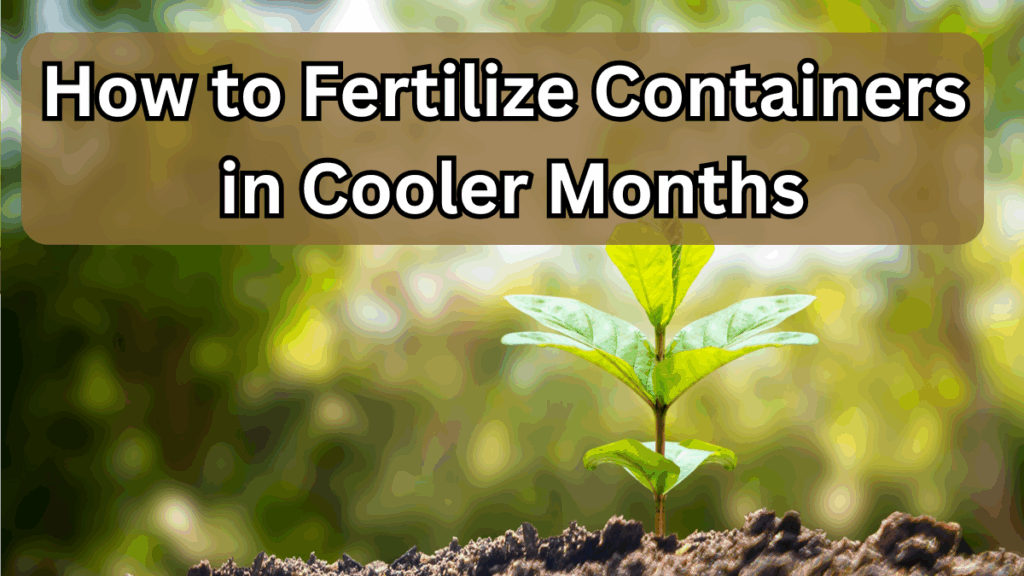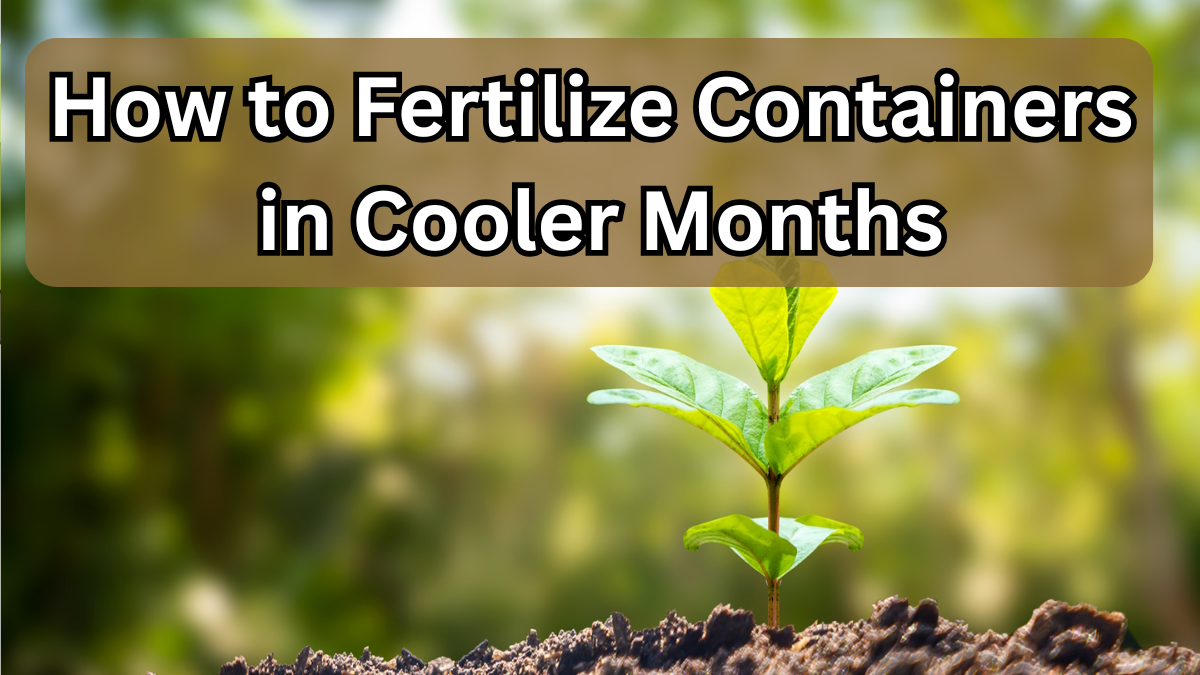Keeping your container plants healthy during cooler months can be a bit tricky. With shorter days and lower temperatures, growth slows down—but your plants still need nourishment. Learning how to fertilize containers in cool months properly ensures they stay vibrant and strong throughout the season.

Why Fertilizing in Cooler Months Matters
Even though plant growth slows in autumn and winter, containers can quickly deplete their nutrients. Unlike garden soil, potting mix doesn’t have natural reserves, so fertilizing containers in cool months is essential to:
-
Maintain healthy root systems
-
Support slow but steady growth
-
Enhance flower and fruit retention
-
Prevent nutrient deficiencies
Choosing the Right Fertilizer
During the cooler months, not all fertilizers are ideal. Here’s what works best:
| Fertilizer Type | Benefits | Recommended Use in Cool Months |
|---|---|---|
| Slow-release | Provides steady nutrients over weeks | Mix into soil at the start of the season |
| Liquid feed | Quick absorption, boosts plant vitality | Apply every 2-4 weeks depending on plant type |
| Organic fertilizer | Gentle, improves soil structure | Incorporate before watering; safe for all plants |
Tip: Combining slow-release and occasional liquid feed ensures your containers get both steady and immediate nutrients.
Fertilizer Application Schedule
A proper schedule keeps your plants thriving without overfeeding. Here’s a suggested routine for fertilizing containers in cool months:
| Month | Fertilizer Type | Frequency | Notes |
|---|---|---|---|
| October-November | Slow-release | Once per month | Apply at the start of each month |
| November-December | Liquid feed | Every 2-3 weeks | Dilute to half-strength for gentle feeding |
| December-January | Organic fertilizer | Every 3-4 weeks | Helps maintain soil health and moisture |
| January-February | Combination (slow-release + liquid feed) | Once per month + every 3 weeks | Supports weak winter growth |
Application Tips for Cooler Months
-
Check soil moisture first: Fertilizers work best when soil is slightly damp.
-
Avoid overfeeding: Slow growth means plants need fewer nutrients than in summer.
-
Target the root zone: Focus fertilizer around the base where roots can absorb it.
-
Use water-soluble feeds sparingly: Cool months slow metabolism, so too much can harm roots.
Organic vs Synthetic Fertilizers
Both options have their benefits, but for winter container care:
-
Organic fertilizer: Safer, improves soil structure, slow-release effect.
-
Synthetic fertilizers: Fast-acting, ideal for liquid feed during weak growth spurts.
Combining both can give your plants balanced nutrition during cooler months.
Common Mistakes to Avoid
-
Overfertilizing, which can burn roots
-
Using high-nitrogen fertilizers, leading to weak, leggy growth
-
Ignoring plant-specific needs (succulents vs. flowering plants)
FAQs
1. Can I fertilize all types of container plants in winter?
Yes, but adjust the type and strength. Most plants prefer slow-release or diluted liquid feed in cooler months.
2. How often should I use liquid feed in winter?
Every 2-4 weeks is ideal. Always dilute to half the recommended strength.
3. Is organic fertilizer enough for container plants in cool months?
Organic fertilizer works well, especially when combined with occasional liquid feed for faster nutrient absorption.
4. Can I stop fertilizing entirely during winter?
It’s not recommended. Even slow-growing plants need nutrients to maintain root health and prevent nutrient deficiencies.
Click here to learn more
